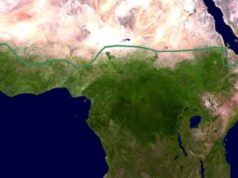
Come 2025, estimates say that African population, which is estimated to be one billion now, will surpass that of China. Sooner than later, by 2030 or so, India will pass the baton of having the youngest population in the world to Africa. The consequent pressures on the Continent to evolve a sustainable and realistic economic growth and the role India can play in Africa’s crusade to alleviate poverty, create jobs and achieve economic growth were some of the highlights of the 14th CII-EXIM Bank Summit, held in India’s capital city New Delhi.
Infrastructure gap
Hiatus between what the continent should have, what it has now in the infrastructure sector is huge and herculean efforts are needed to bridge the gap. There was an estimate floated that over a period of time, say, 20 to 30 years- that is how the investments in the infrastructure should be looked at-should be over US$ 100 trillion. It may be mindboggling. But a visit to diverse African continent would vouch for the veracity of the figure. Well laid out roads and highways network are there only in a few states and that too mainly in the capital city or near port towns to ensure movement of goods from port cities to hinterlands. The vast majority of the states lack even rudimentary facilities of transportable roads, civic facilities, urban conveniences, rural road network connecting them with towns and cities. Housing is another facet that needs heavy investment. Housing needs of close to one billion people need heavy investments and planning. To top it, significant investments are needed to develop well-knit transportation including railways, aviation connectivity, etc.
Financing
I. To carry forward the development efforts to its desired level, the quantum of funding needed is incredible. The funds have to come from abroad. An automatic private sector route for funding is difficult given the fact that 90% of the utilities including power, roads, railways, aviation etc are in the government hand. FDI in critical sectors is not encouraged due to political and other reasons. In countries like South Africa, unbundling of energy utilities are facing political resistance, mainly on account of the fear of loss of employment. Also, funding from multilateral sources faces severe crunch on account of the stiff conditions attached which most of the African countries cannot comply. To overcome such deterrents, it is important to devise newer schemes and funding models, particularly from the point of view of India. Unlike China, where decisions can be taken faster by the political administration because of its unique structure of governance, in the Indian context such decisions will be painstakingly slow thanks to the democratic superstructure that lays down procedures and rules. India has to evolve a financial architecture to address the challenges since investment in Africa’s infrastructure alone would entail upwards of US$ 100 trillion over the next 15-20 years.
Agriculture
India’s Involvement in Africa’s agriculture sector should be well calibrated. To feed its swelling population, Africa needs to enhance food production. Yet, the policies being followed by countries in the region are restrictive. Some countries like Ghana, which has a huge tract of land at its command is open to contract farming and even FDI. But a sizeable number of countries, are very possessive about land, despite the fact that they are mostly uncultivated and remain fallow. There are many who hold the view that Africa should evolve a land policy sensitive to each nation that protects the interests of the local farmers with the introduction of concepts like contract farming, long term lease to corporations, allowing FDI etc. Equally significant is the need for a shift in approach by the Indian entities while getting involved in the agriculture sector. The trading mindset should be replaced by that of a catalyst. Their involvement should go beyond selling tractors, seeds, irrigation equipment, cold chains etc. There is a need for focusing on skilling, capacity building, promoting organic farming, processing, creating strong supply chains, value addition and in identifying export outlets. India can support Africa in introducing IT-enabled agricultural practices like precision agriculture, greenhouse cultivation, fisheries, etc to enhance production and productivity and at the same time adhering to international quality standards to get product acceptability
Manufacturing
Countries like Africa, South Africa etc have developed a strong industrial base. Some of the poorer countries in the region are smarting on newly found oil wealth. But one glaring fact is that the number of billionaires and millionaires has gone up in the continent. But inclusive growth is a far cry. In some countries, inequalities in income levels widened. There is a heavy migration from rural areas to urban centers in search of livelihood. This has led to the abandoning of agriculture and those who are not in the mainstream are slipping gradually into poverty and deprivation. This trend can be set right only when the focus should be on tiny, small and medium enterprises. This can be done only through sustained effort supported by skilling people, empowering women and creating structures for providing adequate funds for starting their enterprises. And India with its success in the SME sector can easily show the way.






